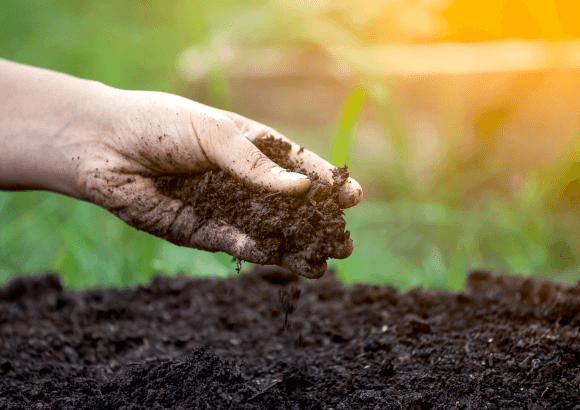Soil Matters: Essential Practices for Enhancing Soil Health

Soil is often referred to as the foundation of life, and for good reason. It plays a crucial role in supporting ecosystems, providing nutrients to plants, and storing water. However, many gardeners and farmers overlook the importance of soil health, focusing instead on plant care and pest management. To truly cultivate a thriving garden or farm, it’s essential to prioritize the health of your soil. In this blog post, we will explore some fundamental practices for enhancing soil health, ensuring that your plants flourish and your garden thrives.
Understanding Soil Health
Before diving into practices for improving soil health, it’s essential to understand what constitutes healthy soil. Healthy soil is characterized by its structure, composition, and biological activity. It contains a balanced mix of minerals, organic matter, air, and water. This balance supports a diverse community of microorganisms, earthworms, and other soil organisms that play a vital role in nutrient cycling and plant growth.
Indicators of Healthy Soil:
- Good Structure: Healthy soil has a crumbly texture that allows for proper aeration and drainage.
- Moisture Retention: Healthy soil can retain moisture without becoming waterlogged.
- Rich Color: Dark, rich soil often indicates high organic matter content, which is beneficial for plant growth.
- Diverse Life: A variety of soil organisms, including bacteria, fungi, and earthworms, indicates a healthy soil ecosystem.
See also: Decoding Autoimmune Disorders Symptoms Treatments and Trailblazing Research
Essential Practices for Enhancing Soil Health
1. Add Organic Matter
One of the most effective ways to enhance soil health is by incorporating organic matter. Organic matter improves soil structure, increases nutrient availability, and enhances moisture retention. It also encourages the growth of beneficial microorganisms. You can add organic matter in several ways:
- Compost: Homemade or store-bought compost is an excellent source of nutrients and can be easily incorporated into your garden soil.
- Mulch: Organic mulches, such as straw, wood chips, or grass clippings, help retain moisture, suppress weeds, and gradually decompose to enrich the soil.
- Green Manures: Planting cover crops (also known as green manures) during the off-season can add nutrients to the soil when tilled under.
2. Practice Crop Rotation
Crop rotation involves alternating the types of crops you grow in a particular area each season. This practice helps prevent nutrient depletion, reduces pest and disease build-up, and improves soil structure. Different crops have varying nutrient requirements and root structures, which can benefit the soil.
For instance, legumes, such as beans and peas, fix nitrogen in the soil, enhancing its fertility. Following legumes with nitrogen-demanding crops, like corn, can lead to healthier plants and higher yields.
3. Avoid Soil Compaction
Soil compaction occurs when soil particles are pressed together, reducing pore space and limiting air and water movement. Compacted soil can lead to poor root growth and decreased plant health. To avoid compaction:
- Limit Foot Traffic: Create designated paths in your garden or farm to minimize foot traffic in planting areas.
- Use Raised Beds: Raised garden beds can help prevent soil compaction and improve drainage.
- Avoid Heavy Equipment: If possible, refrain from using heavy machinery in your garden, as it can compact the soil.
4. Monitor pH Levels
Soil pH affects nutrient availability and microbial activity. Most plants prefer a slightly acidic to neutral pH (around 6.0 to 7.0). Testing your soil pH can help you determine if amendments are needed.
If your soil is too acidic, you can add lime to raise the pH. Conversely, if your soil is too alkaline, sulfur or organic matter can help lower the pH. Regular testing will allow you to maintain optimal conditions for plant growth.
5. Encourage Biodiversity
A diverse range of plants and soil organisms can enhance soil health. Diverse root structures help aerate the soil, while different plants contribute various nutrients and organic matter. To promote biodiversity:
- Plant a Variety of Crops: Mix flowers, vegetables, and herbs in your garden. Companion planting can also help deter pests and attract beneficial insects.
- Attract Beneficial Insects: Incorporate plants that attract pollinators and predatory insects, which can help manage pests naturally.
6. Use Minimal Tillage
Tillage can disrupt soil structure and harm beneficial organisms. Minimizing tillage can help maintain soil health and preserve the ecosystem within the soil. Instead of traditional tilling, consider using no-till or reduced-till methods, which involve less disturbance of the soil. This practice allows for better moisture retention and improved soil structure.
7. Invest in regenerative agriculture
Investing in regenerative agriculture is a crucial practice for enhancing soil health, as it focuses on restoring and maintaining the natural ecosystem. This approach emphasizes techniques such as cover cropping, crop rotation, and reduced tillage, which help improve soil structure, increase organic matter, and promote biodiversity.
By prioritizing practices that nurture the soil, regenerative agriculture not only boosts nutrient availability and water retention but also fosters a vibrant microbial community. Ultimately, these methods contribute to sustainable farming, leading to healthier crops, improved resilience against climate change, and a thriving environment for future generations.
In Conclusion
Enhancing soil health is a vital aspect of successful gardening and farming. By incorporating organic matter, practicing crop rotation, avoiding compaction, monitoring pH levels, encouraging biodiversity, and minimizing tillage, you can create a thriving environment for your plants. Healthy soil not only supports your plants but also contributes to a sustainable ecosystem. Remember, the health of your soil is a long-term investment that pays off in vibrant gardens, bountiful harvests, and a healthier planet. Start implementing these practices today and watch your garden flourish!






